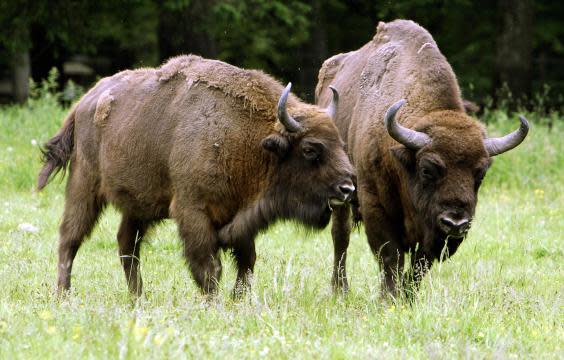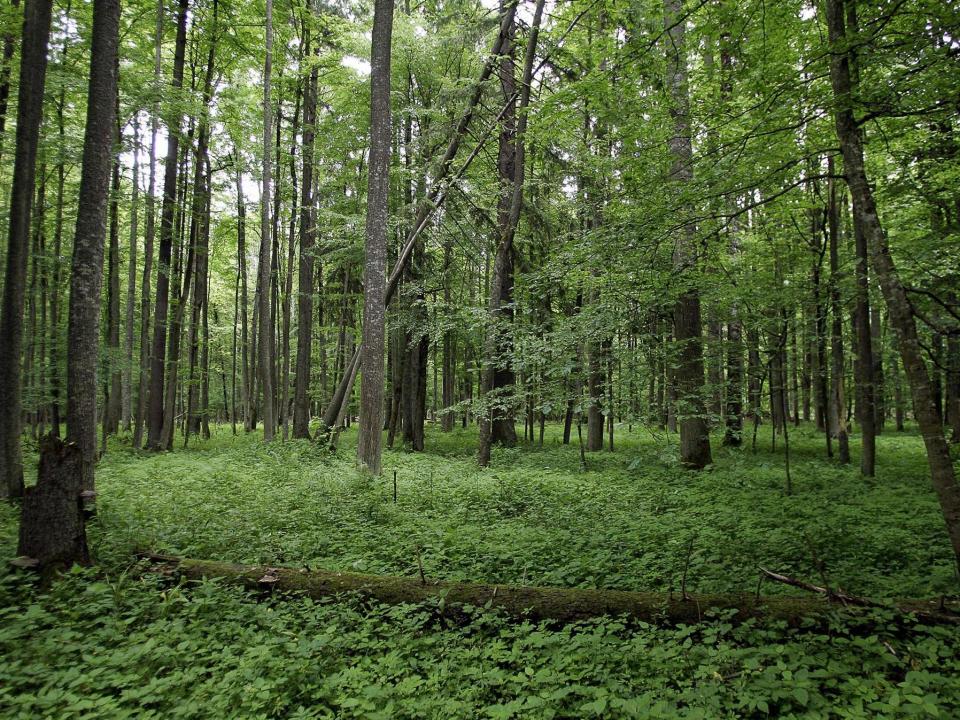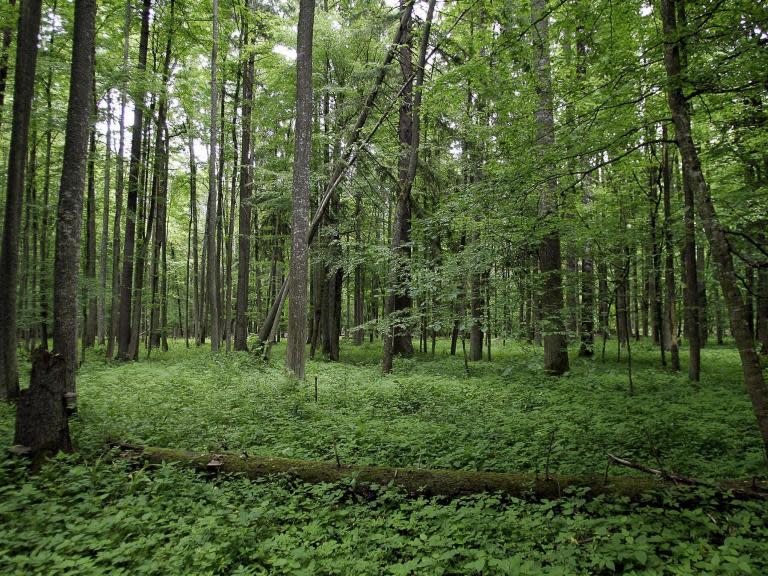The fight to save Poland’s Bialowieza Forest from destruction
The forest floor is a graveyard, covered with fallen spruce and oak trees. But beneath the broken limbs and rotting leaves, thousands of species of insects are feeding in Bialowieza Forest. Fungi of many types are found only here and sprout year-round. More are discovered every year.
More than 200 species of birds, including rare woodpeckers and owls, fill the air with song.
“There is more life in a dead spruce than a living one,” says Professor Rafal Kowalczyk, the leader of the Mammal Research Institute at the Polish Academy of Sciences, during a tour of the forest – one of Europe’s last remaining primeval forests and part of an ecosystem largely untouched since the last glaciers receded from the continent more than 10,000 years ago.
It has been more than a year since the European Court of Justice ordered an end to logging in the forest, finding that it posed a clear threat to the world heritage site.
The scars, though, are still visible – from the tracks gouged into the earth by the heavy machinery used to cut down thousands of ancient trees to the gaping holes in the canopy created by their removal.
The ruling was a major defeat for Poland’s governing Law and Justice party, which supported the logging. Warsaw initially defied the court order, but relented when faced with a fine of €100,000 (about £87,000) for each day it violated the directive.
The battle over Bialowieza is just one of many being waged by the right-wing government against the European Union, which has accused Poland of posing a risk to democratic values and the rule of law by trying to pack its courts and restrict press freedoms.
Now there are fears that the Polish government is once again drawing up plans to increase logging in the area, skirting the ruling by increasing the quota for wood in the hundreds of square miles of forest that lies outside the boundaries of the world heritage site.

The protected part of the Bialowieza woodland, which covers about 550 square miles and extends into neighbouring Belarus, was long the hunting ground for European nobility and royalty, including Lithuanian dukes, Polish kings and Russian czars.
During the German occupation of Poland, Hermann Göring was so enamoured of the forest that he drew up plans to create the world’s largest hunting grounds and establish a Nazi Jurassic Park of sorts, reintroducing prehistoric animals to the landscape.
As a playground of the rich and powerful, Bialowieza was spared the fate of so many of the continent’s other forests, most of which were razed and some of which were turned into intensively controlled versions of nature.
The order imposed on some of these European forests is remarkable.
Armies of forest rangers relentlessly clear dead wood and undergrowth to create near perfect carpets beneath the pines. The woods can feel more like nurseries than wild spaces.
“We have forgotten what nature looks like,” Kowalczyk says.
But Bialowieza has remained wild and unruly.
Its remoteness and mostly pristine condition helped make it the site of one of the continent’s great conservation victories – the reintroduction of bison after the last free-roaming animal was hunted and killed in 1919.

The forest is now home to Europe’s largest herd of bison, or wisent.
“Most people, when they think about forests, think about managed nature,” says Kowalczyk, who first came to Bialowieza in the 1980s. “This place is so different than any forest I had ever seen.”
While the bison was a big success story, a much smaller creature, the hairy little bark beetle, set off the logging fight.
Spruce trees, especially when in a weakened state, make a perfect mating ground for the beetles. The male bores into the tree, creating a chamber where he will release pheromones to attract females. He will mate with several of them, who in turn will deposit dozens of eggs in the chamber before flying off to find new mates.
The larvae left behind will feed on the vascular tissue of the tree. By the time they pupate, the damage they have done often has sucked the life from the spruce.
The tracks from the beetles, known as printers, can still be spotted in felled trees all across the forest.
Warmer winters, brought on by climate change, have allowed the population to explode. And the preference of forest managers for spruce trees has expanded the territory where they can thrive.

By 2016, it was clear that the beetle infestation in Bialowieza was devastating large tracts of trees.
For many scientists, the best way to manage the infestation was to leave it alone, letting nature take its course.
“The bark beetle has been a part of the ecosystem for hundreds of years,” says Adam Bohdan, a biologist from the Wild Poland Foundation. “This phenomenon is a natural adaptation to the new climate situation.”
But the Polish government did not agree. It argued that the lack of human intervention in the forest would doom it.

So Jan Szyszko, the environment minister at the time, ordered a large-scale logging campaign, allowing heavy machinery to roll into pristine areas of woodland.
“We will rebuild the valuable habitats in the Bialowieza Forest by removing dead trees as much as is necessary and restoring the oaks and ashes,” Szyszko declared in 2016.
The move was greeted with outrage, with protesters descending on the forest, setting up an encampment and forming human blockades to try to stop the heavy machinery.
An army of more than 1,000 forest rangers from around the country was dispatched to a small village on the border of Belarus ready to confront the activists.
At times, tempers boiled over into violence. Skirmishes broke out as activists engaged in coordinated acts of civil disobedience.
But it was not until the European court threatened financial penalties that the logging ended.
A report issued by Unesco in February found that the “logging operations and other forest management activities have disrupted the ecological and natural processes in the property”.
But it was not beyond repair, according to the report. And the forest is much quieter now. New life is replacing the old, although beetles remain a problem with no easy solution.
“In the natural forest, there is two times more dead wood than living,” says Bohdan, who took part in the protests a year ago. “It is really a unique laboratory.”
“But all the time,” he says, “there is a worry that they will start logging again.”
© New York Times

 Yahoo News
Yahoo News 

